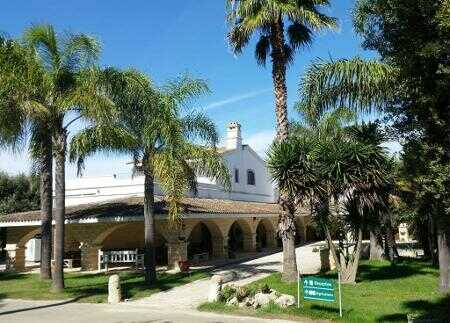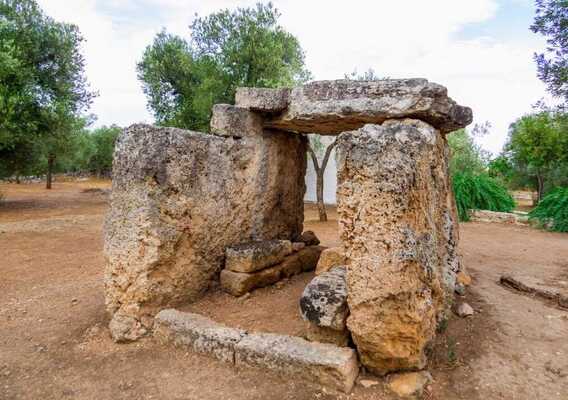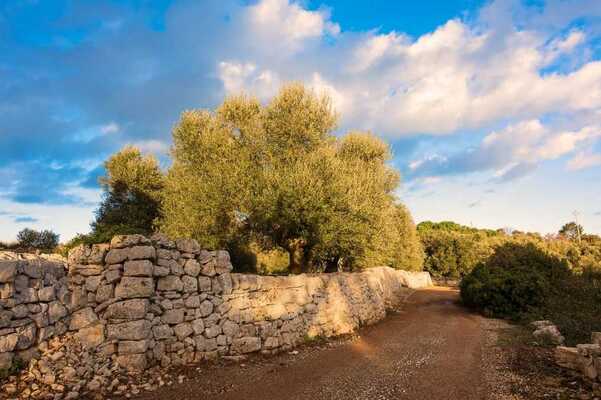Courtyard houses in Salento
During your walks through the historic centers of Salento, you may come across houses with a particular architectural shape. The phenomenon of courtyard houses, born in 1500 in Salento, favored, in past times, the social cohesion of families thanks to its structural characteristics.
The courtyard house is common throughout the Mediterranean area also for common reasons related to the climate: part of the work that would otherwise have to be carried out indoors could easily be moved outdoors.

How they were structured
- From an architectural point of view, these homes are composed of a courtyard conceived as a multifunctional space outside the home, as a place of work, storage and warehouse, shelter for working animals, space for socialisation, entertainment and play to which accessed from a portal overlooking the street.
- All the entrances to the individual rooms that make up the building overlook the courtyard. The rooms are hardly connected to each other from the inside.
- As time passed, another room was built in the courtyard: the house of the firstborn. In this way we arrived at multi-family courts.
- With the improvement of the living conditions of the farmers, who went from laborers to small owners, the elementary courtyard house was enriched with a covered driveway, connecting the road and the house, called samportu or sampuertu. The horse and the trailer were stored in this room and the straw and work tools were stored.
- A first important modification to courtyard houses are the so-called shutters, or doors, from here the socializing moment begins to lose importance and the need for privacy begins. Process that will lead to the detachment of the children’s family from that of the parents, thus moving from the extended family to the small family, i.e. the one today.
- The stable, the room where the well is located and the “pile” for the laundry (a tub generally dug into a block of stone) also overlook the courtyard. At the back of the houses, in some cases, there is also a small garden, not paved unlike the courtyard.

The social importance of courtyard houses
The “courtyard houses” were owned by large landowners, who had their laborers use them as homes. It was usually a single family unit who lived in these houses, but often some rooms were given to married children who, in this way, continued to live together with their family of origin. The rooms were quite large, but sparsely furnished.
This type of housing promoted socialization and had a great function of social cohesion. The layout and architectural structure of the house were therefore important for the socialization process, the living cell was such as to favor the coexistence of the family, in this way the father and/or grandparents, in continuous contact with their children and grandchildren, spent the free time talking and telling fairy tales, the so-called cunti and culacchi which kept together and allowed the traditions and aspects of the popular culture of the time to be passed down.
In recent years there has been a recovery of “courtyard houses” by the owner families, who often use them as private homes or as accommodation facilities, in particular B&Bs – renovated with taste and following the styles of Salento architecture. Many examples of “courtyard houses” are found in the towns of Salento Greece, in Salento.
Currently there are 11 municipalities that make it up, all in the province of Lecce: Calimera, Carpignano Salentino, Castrignano dei Greci, Corigliano d’Otranto, Cutrofiano, Martano, Martignano, Melpignano, Soleto, Sternatia, Zollino.

Agriturismo Torrevecchia
Salento has some of the most beautiful farms, very ancient and immersed in the silence of the countryside, which have been transformed into organic production companies, surrounded by olive trees. Among these, the Agriturismo Torrevecchia is an example.

The Dolmens in Salento
It is difficult to explain the overwhelming love for this extraordinary place, a land made of landscapes, colors and mysteries: Salento which has very ancient, even prehistoric, roots. We start precisely from the 4th millennium BC. with the birth of the Dolmen in the Salento area.

Dry stone walls in Puglia
Among the many peculiarities that characterize the Salento landscape and Puglia in general, there are undoubtedly the dry stone walls. These walls give all visitors one of the most authentic faces of Salento such that they immediately understand where they are. The creators of the "dry stone walls", who handed down this art form through the centuries, were certainly the descendants of the Messapians and the Neoliths.
